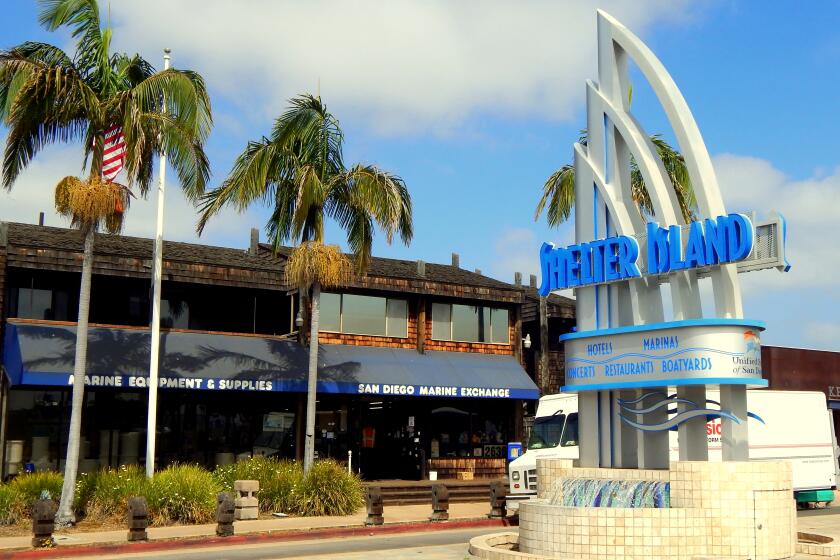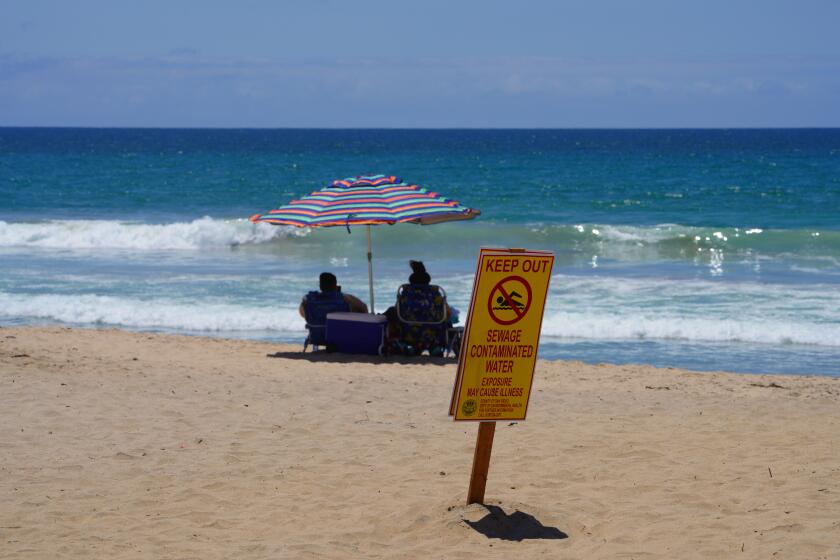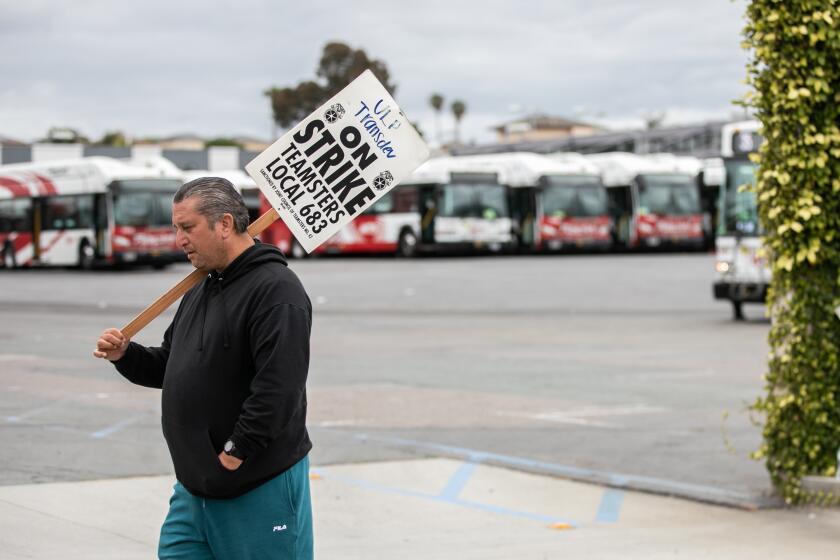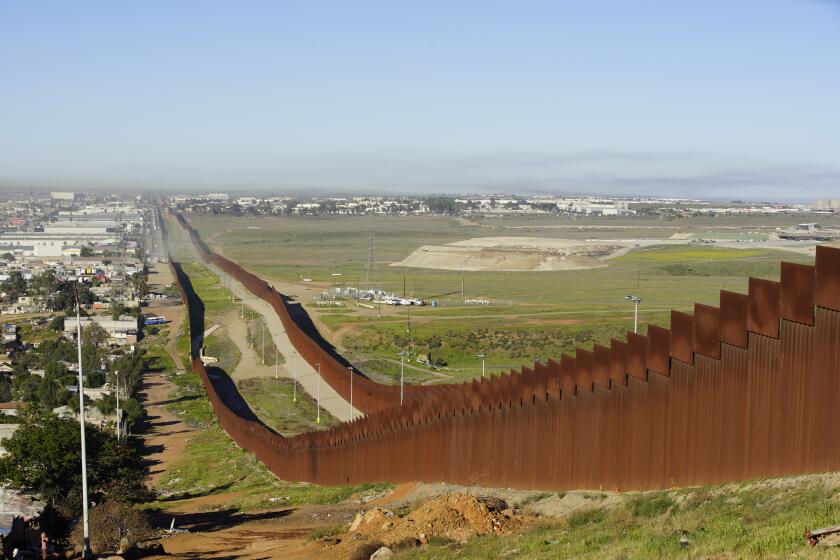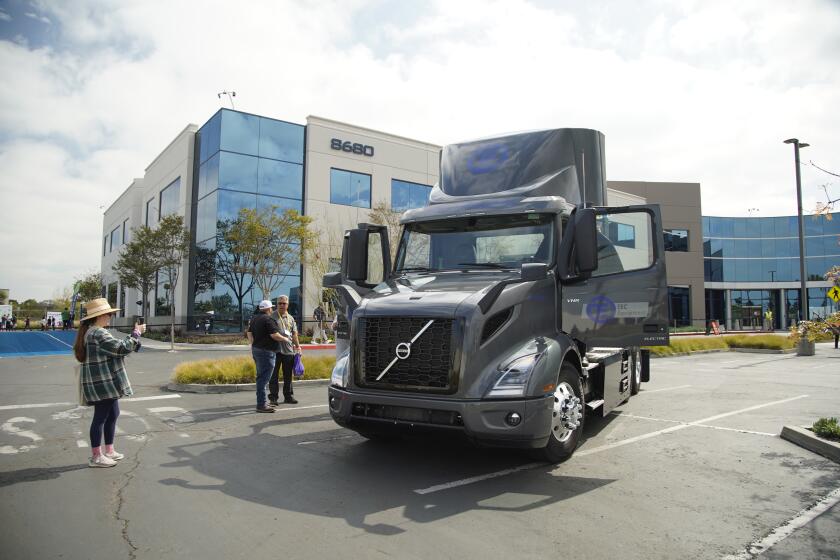Otay Mesa airport overhaul to address climate change, protect burrowing owls
A billion-dollar project to develop the Brown Field Municipal Airport in Otay Mesa will include efforts to help offset greenhouse-gas emissions, as well as protect San Diego’s dwindling population of burrowing owls.
Roughly $2.5 million in environmental projects accompanying the airport’s overhaul were announced Monday as the result of a legal settlement between developer Metropolitan Airpark LLC and a coalition of green groups.
“I have to commend the developer for looking for innovative strategies,” said Jonathan Evans, the environmental health legal director for the Center for Biological Diversity, which challenged the project in court. “We’d much rather see that money go toward conservation than legal fees.”
The upgrades to the airport, which is owned by the city of San Diego, are slated to include about 2.5 million square feet of new development on 317 acres, including full-service general aviation facilities, as well as two hotels and retail establishments.
While some of the construction will happen on already developed land, the project is projected to disturb about 200 acres of owl habitat.
Metropolitan Airpark has agreed to pay for a conservation program for burrowing owls headed up by San Diego Zoo Institute for Conservation Research, as well as set aside land to protect owl habitat and vernal pools.
Under the settlement, development of the Brown Field airport — located 1.5 miles north of the Mexico border, north of Otay Mesa Road and west of state Route 125 — will now include efforts to preserve or relocate what is the largest known colony of burrowing owls in San Diego County, according to environmental groups.
Burrowing owls are not endangered but are at risk of disappearing from the San Diego region in large part due to the effects of human development. The owls live in open grassland and nest in holes dug by other animals, primarily the California ground squirrel, but also prairie dogs, desert tortoise and other burrowing animals.
Metropolitan Airpark has pledged to set up a trust with the San Diego Foundation to help fund solar arrays on facilities used by nonprofits that serve low-income areas. The airport project will also include a significant amount of onsite solar panels, roughly 12 megawatts or enough to power around 2,000 homes on average.
Shortly after the city approved the project in 2013, the Center for Biological Diversity, Preserve Wild Santee, Coalition for a Safe Environment, the California Chaparral Institute and other environmental groups filed a lawsuit challenging the environmental review process.
A San Diego Superior Court judge ruled against the lawsuit, finding that there was no significant impact on owls or greenhouse gases.
However, during an appeals process, the California Supreme Court ruled in another case brought by the Center for Biological Diversity that would have far-reaching implications for development throughout the state.
In 2015, the high court found that greenhouse gas emissions hadn’t been properly accounted for in the environmental review of a planned community north of Los Angeles called Newhall Ranch. The ruling sent a strong message to developers that greenhouse-gas emissions need to be tracked and mitigated under the California Environmental Quality Act.
“Because of the uncertainly resulting from the (state) Supreme Court decision in the Newhall case, it was beneficial for the project to settle,” said Charles Black, CEO of Metropolitan Airpark. “It allows us to move forward and bring this to market. This is an important project for the city of San Diego.”
The project now awaits federal approval. Completion is envisioned within 20 years with construction slated to begin by 2018.
Twitter: @jemersmith
Phone: (619) 293-2234
Get Essential San Diego, weekday mornings
Get top headlines from the Union-Tribune in your inbox weekday mornings, including top news, local, sports, business, entertainment and opinion.
You may occasionally receive promotional content from the San Diego Union-Tribune.

